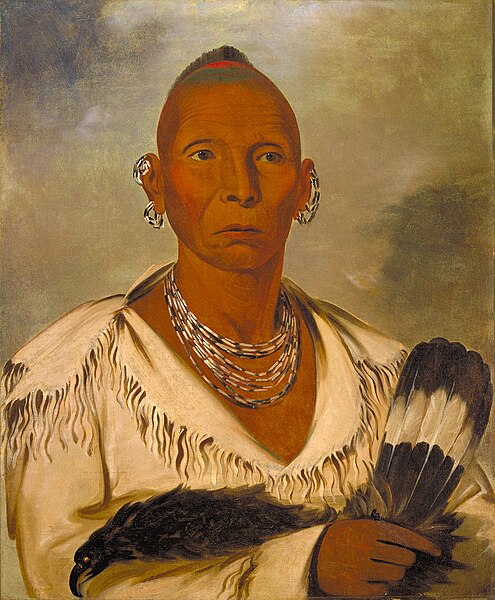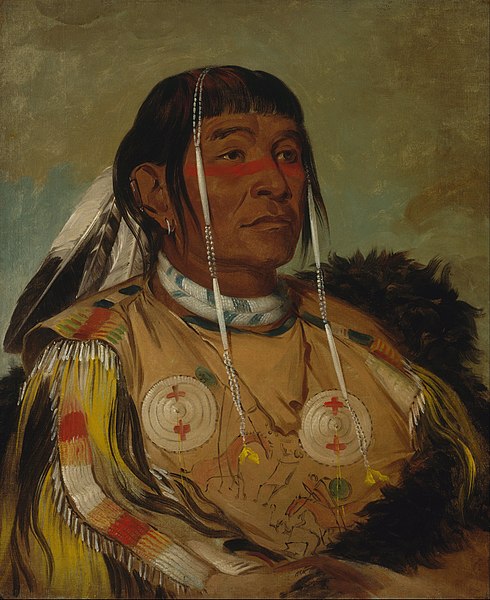Benjamin O'Fallon (1793–1842) was an Indian agent along the upper areas of the Mississippi and Missouri Rivers. He interacted with Native Americans as a trader and Indian agent. He was against British trappers and traders operating in the United States and territories. He believed that the military should have taken a strong stance against the British and firm in negotiations with Native Americans. Despite his brash manner and contention with the military, he was able to negotiate treaties between native and white Americans. In his early and later careers, he built gristmills, was a retailer, and a planter. He collected Native American artifacts and paintings of tribe members by George Catlin. His uncle William Clark was his guardian and financial backer.
Benjamin O'Fallon, ca. 1833, National Portrait Gallery, Smithsonian Institution
George Catlin, Ma-ka-tai-me-she-kia-kiak (Black Hawk), Sauk, 1832. He led the Black Hawk War in 1838.
George_Catlin, Interior of a Mandan lodge, Mandan O-kee-pa Ceremony, 1832 The painting was auctioned by the Field Museum in December 2011, it sold for $1.3 million, a record for a Catlin painting.
George Catlin was an American lawyer, painter, author, and traveler, who specialized in portraits of Native Americans in the American frontier. Traveling to the American West five times during the 1830s, Catlin wrote about and painted portraits that depicted the life of the Plains Indians. His early work included engravings, drawn from nature, of sites along the route of the Erie Canal in New York State. Several of his renderings were published in one of the first printed books to use lithography, Cadwallader D. Colden's Memoir, Prepared at the Request of a Committee of the Common Council of the City of New York, and Presented to the Mayor of the City, at the Celebration of the Completion of the New York Canals, published in 1825, with early images of the City of Buffalo.
George Catlin by William Fisk, 1849
Self-portrait, aged 28
Catlin's travels in North America between 1830 and 1855
Sha-có-pay, The Six, Chief of the Plains Ojibwa, an 1832 portrait at Fort Union that is now housed in the Smithsonian American Art Museum in Washington, D.C.







